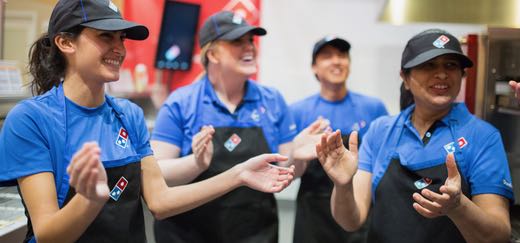
The average employee turnover rate at fast food joints can be as high as 300%. That equates to a store fully turning over its staff three times within a year. (And we wonder why fast food chains struggle to give us attentive and efficient service.)
High employee turnover rates not only compromise service to customers, it can also hurt a business financially. It costs a business like Domino’s Pizza $2,500 to train every new entry-level worker and in upwards of $20,000 to train a new store manager. And when you hire 180,000 workers a year, like Domino’s was doing in the late 90s, we’re talking huge financial costs.
So when David Brandon was named Domino’s CEO in 1999, he went on a crusade to reduce Domino’s 158% employee turnover rate. Brandon’s crusade has been a success. These days, Domino’s employee turnover rate hovers around an impressive 107%.
In reducing its employee turnover rate, Domino’s choose not to go the conventional path of paying workers more money. As Brandon put it, “If we had increased everybody’s pay 20%, could have moved the needle a little bit to buy a little loyalty? Maybe, but that’s not a long-term solution.” He went on to say, “… you can’t overcome a bad culture by paying people a few bucks more.”
Instead, Domino’s chose to focus on retaining store managers more than store employees to reduce staff turnover. It is Domino’s experience when store managers churn at high rates, it has a tremendous negative effect with store-level employee turnover rates.
So the Domino’s Theory to Keeping Employees is about ensuring store managers are of better quality, have better tools, and are better incentivized.
Hire Better Quality Store Managers
According to research commissioned by Dominos, the critical success factor of a Domino’s store is not location, location, location … but rather … store manager selection, selection, selection. One way Domino’s selects better store managers is to have each candidate undergo an online test to measure their financial acumen and people management style.
Give Store Managers Better Tools
Each Domino’s store has an in-store computerized tracking program which details store sales figures down to the employee level with stats like average order size per employee and the time it takes to get a pizza order out the door. These tools help Domino’s managers to better track their star performers and challenged performers.
More Meaningfully Incentify Store Managers
Besides giving profit-based bonuses, Domino’s also doles out stock options to top-performing managers based upon customer service measurements and store sales growth gains.